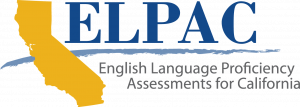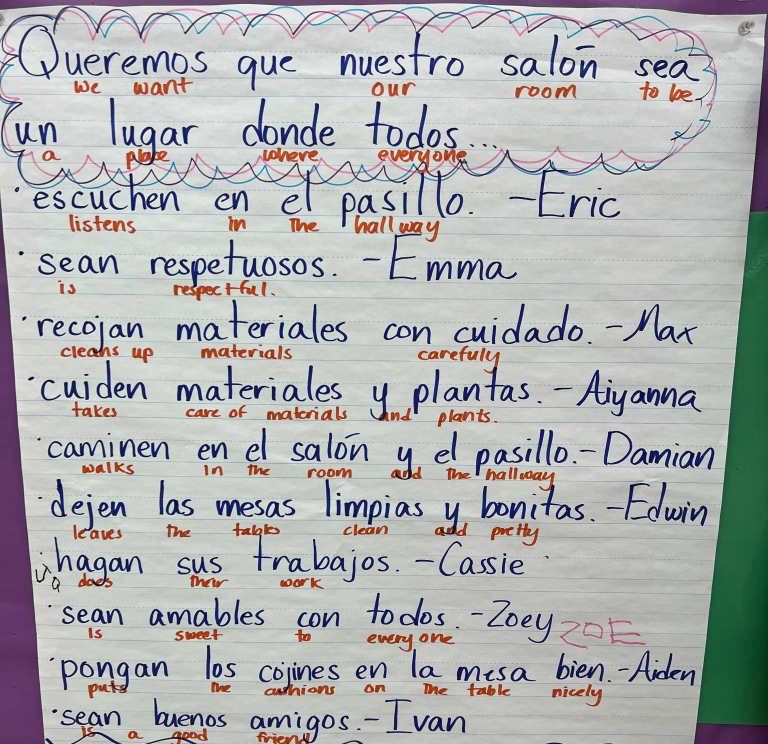EVALUATION AND ACCOUNTABILITY
San Leandro Unified School District is committed to working in concert with students, parents, teachers, support staff, administrators, and community-based educational partners to provide effective instructional programs for English learners (ELs). How SLUSD systematically monitors programs and engages in continuous reflection and improvement across the district’s schools is foundational to success.
Evaluation
 The CA EL Roadmap Guiding Principles and Elements act as the primary touchstone for goal setting, monitoring, and evaluation. The principles and elements set forth by the California Department of Education are not meant to serve as a checklist, but rather as a set of research- and practice-based considerations in promoting EL success, and college and career readiness.
The CA EL Roadmap Guiding Principles and Elements act as the primary touchstone for goal setting, monitoring, and evaluation. The principles and elements set forth by the California Department of Education are not meant to serve as a checklist, but rather as a set of research- and practice-based considerations in promoting EL success, and college and career readiness.
Listed below are SLUSD’s EL Guiding Principles and Elements that have been adapted from the CA EL Roadmap Guiding Principles and Elements.
EL Guiding Principles
Principle 1: Assets-based Education: Schools and educators foster asset-oriented environments that are grounded in sociocultural competence.
Elements:
- Assets are valued and built upon in culturally responsive curriculum and instruction.
- Programs, curriculum, and instruction are responsive to different EL student characteristics and experiences.
- School climates and campuses are affirming, inclusive, and safe.
- Schools value and build strong family and school partnerships.
- Schools and districts develop a collaborative framework for identifying English learners with disabilities.
Principle 2: Rigorous Academics for All: Students engage in academically rigorous learning experiences that cultivate high achievement and prioritize bilingualism and biliteracy.
Elements:
- Language development occurs through Designated ELD and Integrated content-based ELD.
- Students are provided a rigorous, intellectually rich, standards-based curriculum
- Teaching and learning emphasize engagement, interaction, discourse, inquiry, and critical thinking.
- ELs are provided access to the full curriculum along with the provision of EL supports and services.
- Students’ home language is valued as a foundation for developing English.
- Rigorous instructional materials support high levels of intellectual engagement and language development.
Principle 3: Systematic Support: Leaders and educators provide systematic, tiered support that includes data-driven assessment for continuous improvement and ongoing capacity building for all teachers and staff.
Elements:
- Leadership establishes clear expectations and commitments to EL access, growth in academic and English proficiency, and participation across the district.
- The school system invests adequate resources to support EL needs.
- The district maintains a system of culturally and linguistically valid and reliable assessments.
- Capacity building and continuous professional development occur at all system levels, including the recruitment of educators skilled in addressing EL needs.
Principle 4: Alignment and Articulation: Programs are articulated and aligned across students’ entire educational experiences and provide a coherent pathway in preparation for college and career in the 21st century.
Elements:
- EL approaches and programs are designed for continuity, alignment, and articulation across grade levels.
- Schools plan schedules and resources to provide additional support for ELs.
- EL approaches and programs are designed to be coherent across schools within districts, across initiatives, and across the state.
Accountability
To ensure  high-quality implementation of all aspects of the EL Master Plan, SLUSD identified rubrics and assessment tools to use at all levels. Student progress monitoring and evaluation consist of disaggregated (school, grade level, language group, race/ethnicity, program status) data analysis (in staff and parent spaces) of these assessments multiple times during the year:
high-quality implementation of all aspects of the EL Master Plan, SLUSD identified rubrics and assessment tools to use at all levels. Student progress monitoring and evaluation consist of disaggregated (school, grade level, language group, race/ethnicity, program status) data analysis (in staff and parent spaces) of these assessments multiple times during the year:
- ELPAC
- District standards-based benchmark assessments (i.e., STAR reading and math, FastBridge)
- California Assessment of Student Performance and Progress (CAASPP) in ELA, Math, and Science
- Reclassification data
- Teacher progress reports, report card data
- Referrals for academic or behavioral support
Rubrics also support monitoring programs and instructional support systems. These rubrics are not meant to be used as checklists but as a set of tools that guide continuous improvement for our multilingual students. While some of the tools are considered aspirational by many educational agencies, SLUSD believes that the rigor and responsiveness of EL programming highlighted in this rubric should be the standard to ensure educational equity for multilingual students. The findings from evaluations using these rubrics are shared with educational partners throughout the year.
District Level
SLUSD uses aspects of the correlated CA EL Roadmap Self Reflection Rubric to inform the SLUSD Strategic Plan and Local Control Accountability Plan (LCAP) during the annual development, implementation and evaluation timelines embedded in those plans. The rubric offers specific criteria which SLUSD uses as an evaluation tool in monitoring the progress of programs and determining the efficacy of initiatives, interventions, and administrative policies intended to raise ELs student achievement.
School Level
Schools use aspects of the CA EL Roadmap Self Reflection Rubric as it applies to school-level programming. This evaluation will occur when designing and monitoring site-based professional learning and services related to EL programs and students. This rubric will also be used in the development and monitoring of School Plans for Student Achievement (SPSAs) and to monitor progress towards goals set by school-level advocacy groups, such as the ELAC. This process of utilizing this rubric within various structures of school-level planning is intended to provide useful feedback to inform modifications and actions to programming for ELs while also having strong coherence to district-level goals and outcomes.
Classroom Level
Aspects of the CA EL Roadmap Teacher Toolkits from Californians Together are used with the district’s teacher evaluation system to monitor classroom level practices, support continuous improvement, and identify needed modifications to inform classroom instruction and staff development priorities and goals. This occurs within staff evaluation timelines and during job-embedded professional learning and collaboration spaces.



